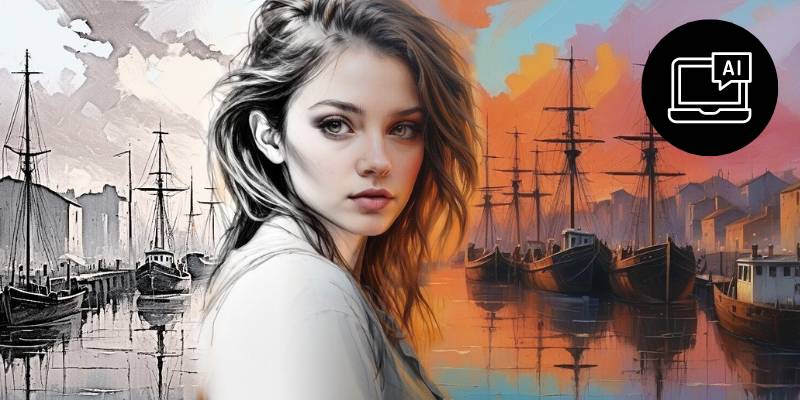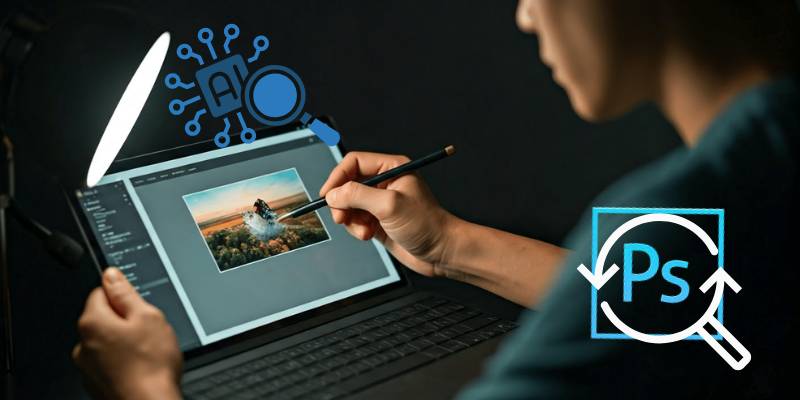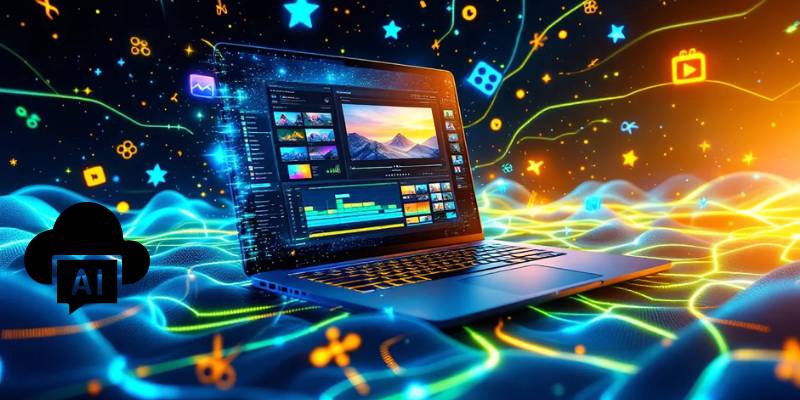I have to confess something: I can’t draw. Or at least, not in the way people usually mean. My notebooks are filled with stick figures and lopsided shapes that look like they’re auditioning for a children’s cartoon gone wrong.
Yet the first time I uploaded one of those messy doodles into an AI platform and watched it transform into a breathtaking, painterly scene, I felt something close to awe.
It wasn’t just about the technology—it was about possibility. What does it mean when someone like me, with no traditional training, can see their imagination come to life?
And, on the flip side, what does this mean for professional artists, illustrators, and photographers who’ve spent years honing their craft?
That’s the conversation happening right now in the world of AI image generation and editing, and in this article, I want to explore every side of it.
Not just the tools and the trends, but the emotions, the ethics, and the very human reactions to a technology that blurs the line between creation and collaboration.
The Promise of Turning Doodles into Art
When we say “from sketch to masterpiece,” it’s not just a catchy phrase. AI really does make it possible to take a rough scribble and expand it into something polished.
Think of it like this: you draw a quick outline of a cat on your tablet. You feed it into an AI tool, and suddenly, you’ve got a lifelike tabby lounging on a velvet cushion, with lighting that looks straight out of a studio setup.
Or maybe you sketch a fantasy castle in ten seconds—AI can transform it into a digital painting worthy of a game concept artist’s portfolio.
For hobbyists, this feels empowering. For marketers, it’s efficient. And for people who’ve always been told “you’re not creative,” it can feel downright revolutionary.
A Short History of AI Photo Generators
AI didn’t leap from nowhere. The foundations of today’s AI photo generators view can be traced back to early experiments in neural networks and computer vision.
Back in the 2010s, researchers were already training algorithms to recognize cats, dogs, and faces. By the early 2020s, diffusion models like DALL·E and Stable Diffusion changed everything.
These models didn’t just recognize images—they could generate them from scratch, based on text or sketches. By 2025, many tools are advanced enough to blend styles, understand perspective, and refine details in ways that feel intuitive.
And here’s the kicker: the cost of access has plummeted. What used to require a research lab’s computing power can now run in a browser.
Why This Matters for Creativity
Here’s where I want to slow down for a moment. Because the temptation is to marvel at the tech specs and skip past the emotional impact. But I think that would be a mistake.
When AI gives someone the power to turn a scribble into a painting, it changes their relationship with creativity. It tells them, “Your ideas are valid, even if your execution isn’t perfect.”
That’s no small thing in a world where so many people stop drawing, painting, or creating because they don’t think they’re “good enough.”
At the same time, though, it raises big questions: if anyone can make “art,” what happens to the value of art? Does democratization empower us all, or does it cheapen the work of professionals?
Photographers’ Guide to Using AI Sketch Tools
While most of the hype centers around illustrators, photographers are also grappling with how sketch-to-image tech might fit into their workflows. Here’s a photographers guide I’ve pieced together from industry conversations:
- Storyboarding: Photographers can sketch rough compositions for shoots and use AI to preview lighting, poses, or backgrounds.
- Client Communication: Instead of describing an idea, you can show clients a refined mock-up generated from a quick doodle.
- Hybrid Art: Some photographers combine photos with AI “sketch fill-ins” to create surreal composites.
This doesn’t mean traditional photography is obsolete. But it does mean the creative process is becoming more collaborative—with AI acting like an assistant who can visualize your rough thoughts instantly.
The Tools of 2025
So, which platforms are making this magic happen? Let’s look at some of the most notable ones shaping 2025’s creative scene.
- Adobe Firefly Sketch-to-Image: Built into Photoshop, it lets you draw directly on the canvas and refine instantly.
- Stable Diffusion Sketch Integration: Open-source, flexible, and customizable. It’s the playground for tinkerers.
- AutoDesk Sketch AI: Targeted at designers, it merges CAD-like precision with painterly finishing.
- Canva AI Draw: Aimed at casual users and marketers, simple doodles become polished visuals in minutes.
Each has its strengths. Adobe is best for pros. Canva wins on accessibility. Stable Diffusion appeals to open-source enthusiasts. And AutoDesk sits somewhere between art and industrial design.
AI-Powered Insights: What the Data Tells Us
I’m a big believer in grounding discussions in facts, not just feelings. So let’s look at what the numbers say.
According to a 2024 report by Grand View Research, the AI art generation market is projected to reach $13.9 billion by 2030, growing at a CAGR of over 20% (source). That’s not a niche hobby—that’s an industry wave.
And user adoption is growing, too. Surveys show that 41% of Gen Z creators have used AI art tools in the past year, compared to just 16% of Gen X. This generational divide suggests that younger creators see AI less as a threat and more as a natural extension of their digital lives.
These ai-powered insights reveal something profound: AI isn’t just a tool. It’s becoming part of the culture of creativity itself.
The Ethical Questions
No article on this topic would be complete without talking about the elephant in the room: ethics.
If an AI tool creates a masterpiece from my sketch, who owns it? Me, because I had the idea? The company that built the model? The artists whose work was used (sometimes without consent) to train the model?
An ethics guide is sorely needed, and some organizations are starting to draft them. The Content Authenticity Initiative (CAI) is working on standards for labeling AI-generated work.
Some countries are considering legislation requiring disclosure. But the conversation is messy, and the answers aren’t clear.
Personally, I believe transparency is the bare minimum. If AI is involved, we should say so. Beyond that, we’ll need industry-wide discussions to find a balance between innovation and respect for human labor.
The Emotional Side: Why People Care So Much
Sometimes, when I talk about AI art with friends, I notice the conversation turns emotional fast. For some, the excitement is palpable. For others, the fear is raw.
I think it’s because art isn’t just about output—it’s about identity. When a machine can “do art,” it feels like it’s intruding on something deeply human. And when we hand over our sketches and get something beautiful back, we’re torn between gratitude and guilt.
Here’s my take: AI doesn’t cheapen creativity—it democratizes it. But if we ignore the fears of professionals, we risk creating a rift. Empathy has to guide this transition as much as innovation does.
Where This Could Go Next
What’s the future of sketch-to-image AI? A few possibilities excite and terrify me in equal measure:
- Real-time sketch collaboration: Imagine drawing with friends, and AI continuously refining your shared doodles into an evolving masterpiece.
- AR + AI fusion: You sketch in the air with smart glasses, and the world around you fills with lifelike visuals.
- Adaptive styles: AI learns your personal style over time and makes outputs feel more authentically “you.”
But with these advancements comes responsibility. Tools that make it easy to create beauty can also make it easy to deceive. We need to keep the ethics guide conversation front and center.
My Personal Take
If you asked me whether I think AI turning sketches into masterpieces is a net positive, my answer would be yes—with a heavy asterisk.
Yes, because I’ve seen firsthand how it empowers people to create. Yes, because it saves time for professionals who want to focus on the creative, not the mechanical. But also “asterisk” because we’re walking into uncharted territory where misuse is almost inevitable.
What comforts me is the reminder that tools don’t replace humanity—they reflect it. A brush didn’t replace artists. A camera didn’t end painting. AI won’t end creativity. But it will change it, and we’d better be ready for that.
Conclusion
From a child’s doodle to a professional’s storyboard, AI sketch-to-image tools are rewriting what it means to create. They’re powerful, accessible, and, yes, controversial.
The question isn’t whether these tools are good or bad. The question is how we, as a society, choose to use them. Will we use them to amplify human creativity—or to undermine it? Will we protect the rights of artists—or ignore them?
For now, I’ll keep uploading my stick figures and marveling at the results. But I’ll also keep asking questions, because the future of art deserves more than blind enthusiasm. It deserves thoughtful, human conversation.


